Why you can trust Tom's Hardware
The 42772 revealed some interesting behavior in my grayscale and gamma tests, but one thing stood out: tremendous color volume. There are a few issues here, but with proper setup, this is a stunning monitor.
Grayscale and Gamma Tracking
Our grayscale and gamma tests use Calman calibration software from Portrait Displays. We describe our grayscale and gamma tests in detail here.
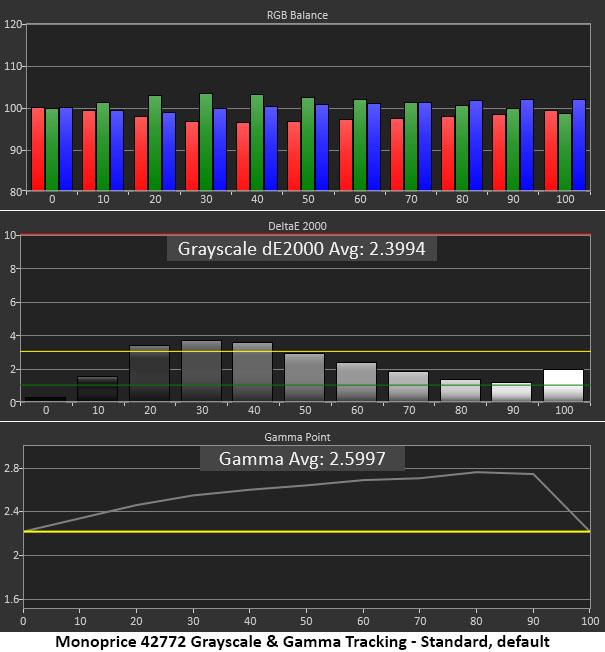
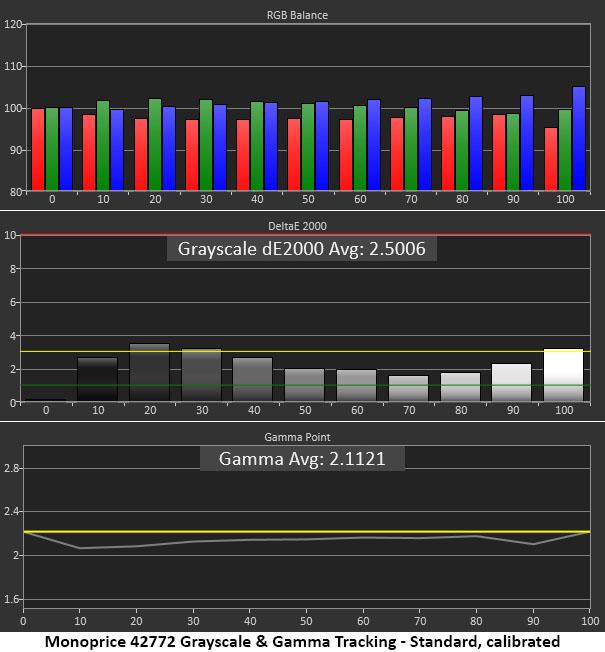
The default grayscale run is good enough that I might say the 42772 doesn’t require calibration. But the gamma trace tells a different story. It is far too dark at the default 2.2 setting, which reduces the advantage of that large color gamut and neutral white point.
The answer is to set gamma to 2.0 and adjust the RGB sliders. If you select the User color temp without adjusting, it is very green in tone. And if you just leave the color temp on Warm, the gamma won’t flatten out. If you have the means to calibrate, by all means do. Otherwise, dial in the settings I detailed earlier for a much-improved image.
Comparisons
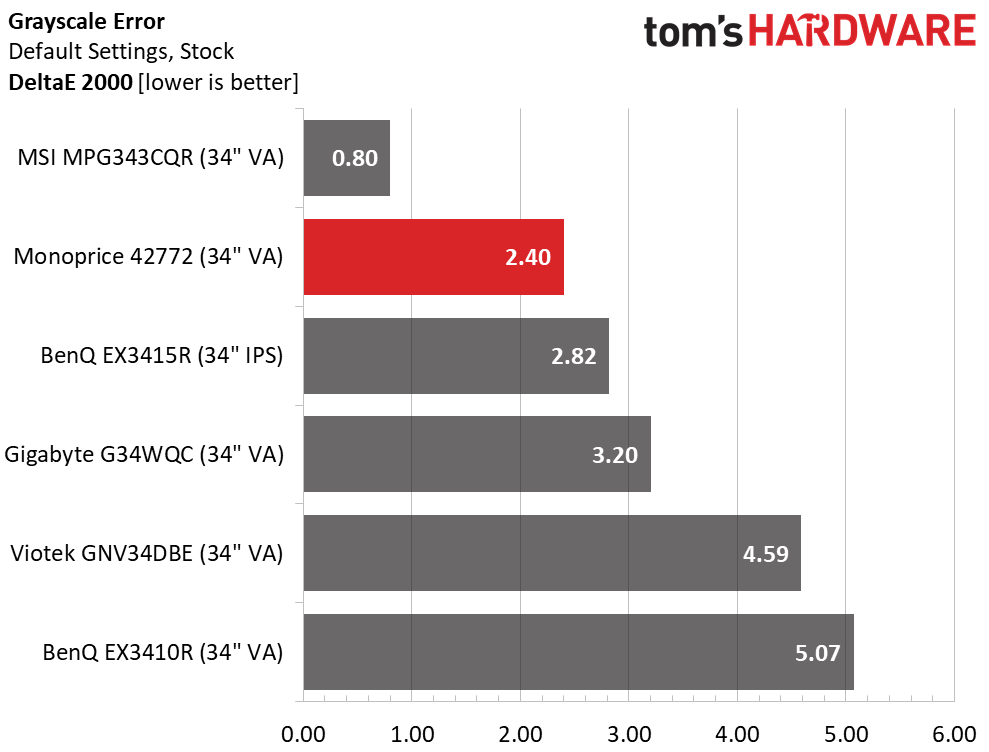
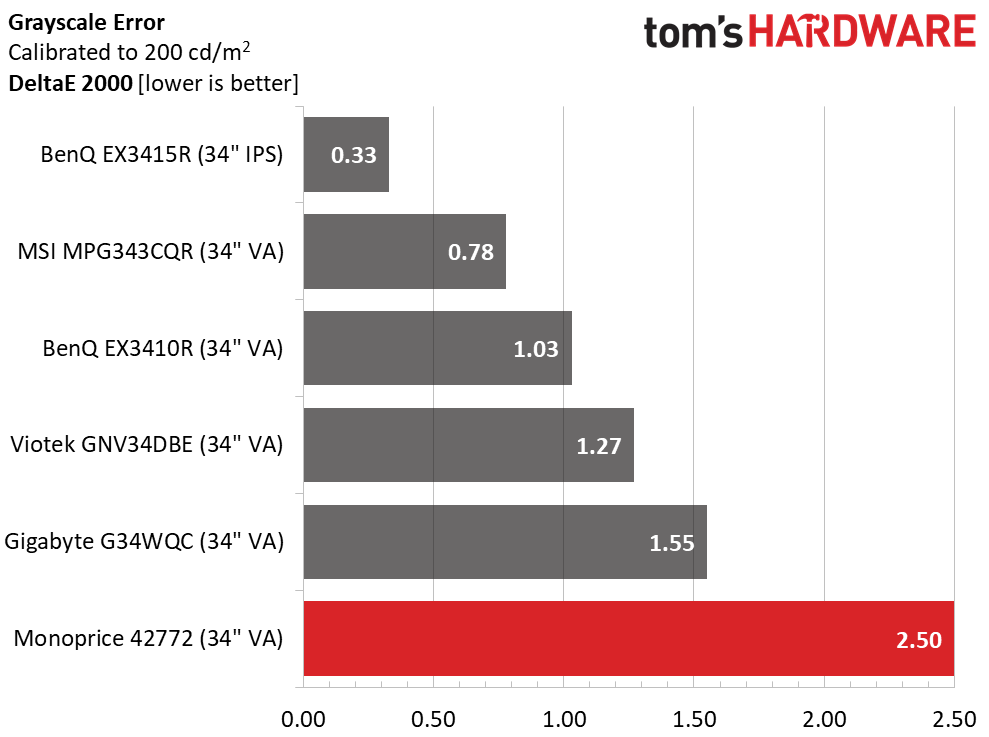
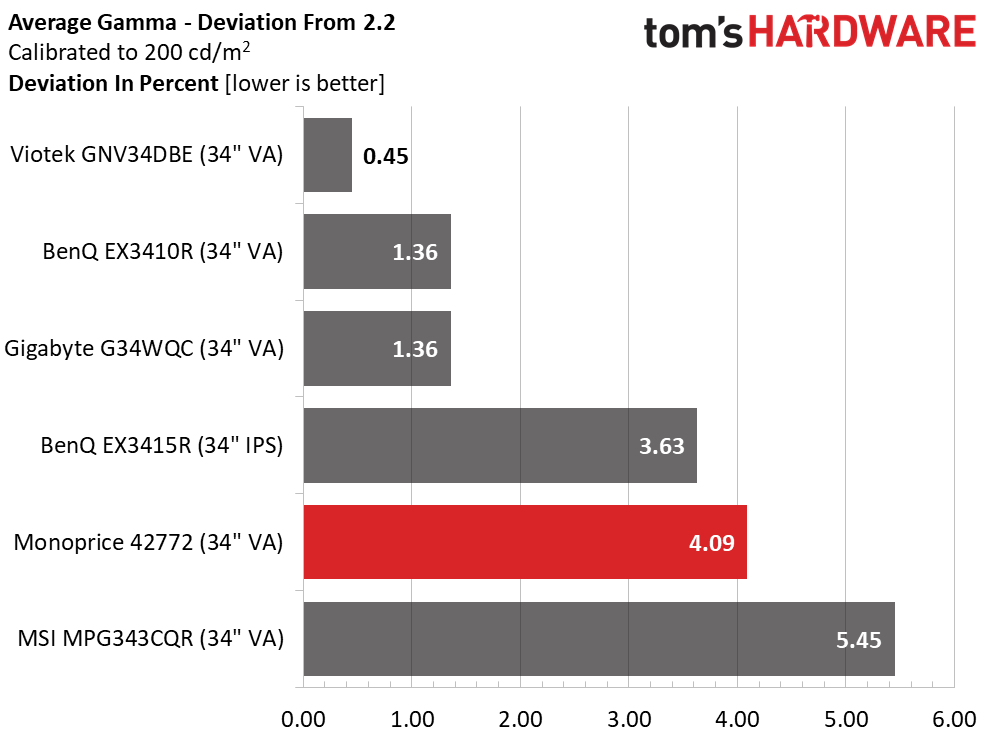
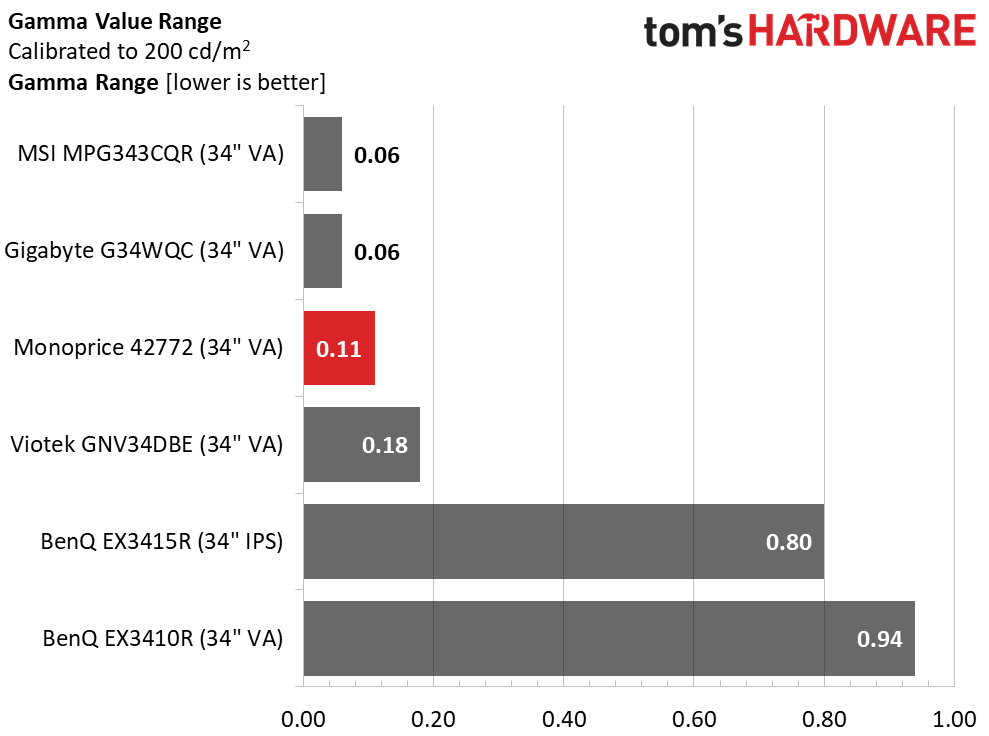
Usually, I won’t recommend adjusting RGB controls if the result is a higher DeltaE score. But 0.1 is an invisible difference. And the User color temp is necessary to improve gamma tracking. Both 2.4 and 2.5dE indicate no visible errors in grayscale tracking. Getting gamma right is equally--if not more--critical to picture depth and color saturation. The final gamma scores are mid-pack, but they positively impact gamut accuracy, which I’ll show you below.
Color Gamut Accuracy
Our color gamut and volume testing use Portrait Displays’ Calman software. For details on our color gamut testing and volume calculations, click here.
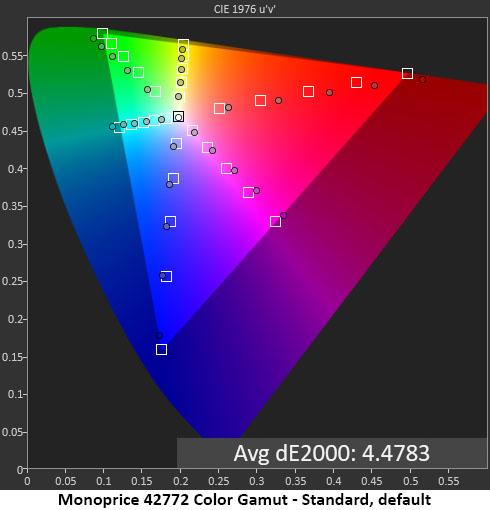
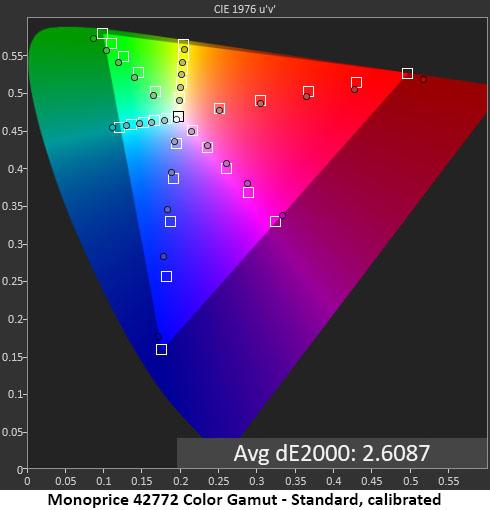
As previously stated, the 42772’s color gamut is very large. Both red and green are slightly past the DCI-P3 triangle perimeter. Red is oversaturated at every point, which makes the image a bit unnatural. The dark gamma has a deleterious effect on color vibrance in every kind of content, dark, light and in between.
Get Tom's Hardware's best news and in-depth reviews, straight to your inbox.
With adjustments in place, the color tracking is significantly better. Only blue is a tad under-saturated and green remains slightly off-hue. But with an average of 2.61dE, there are no visible errors. The lighter and flatter gamma means the picture is much more realistic and vivid.
Comparisons
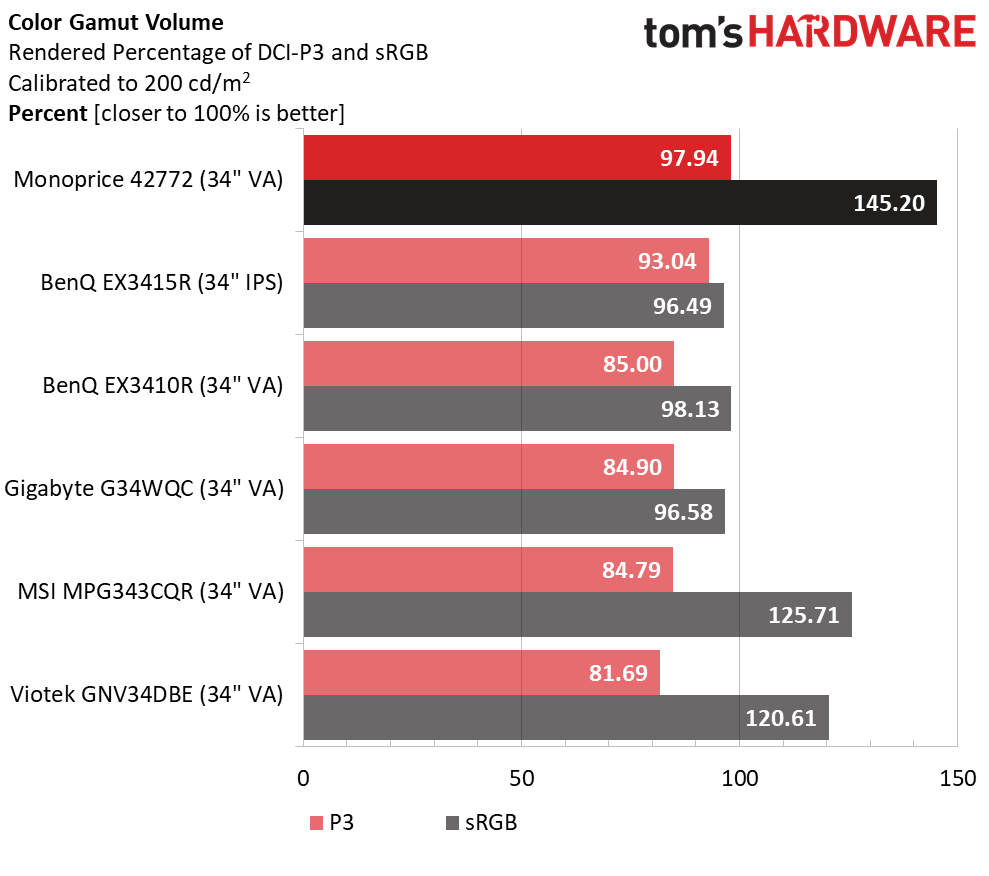
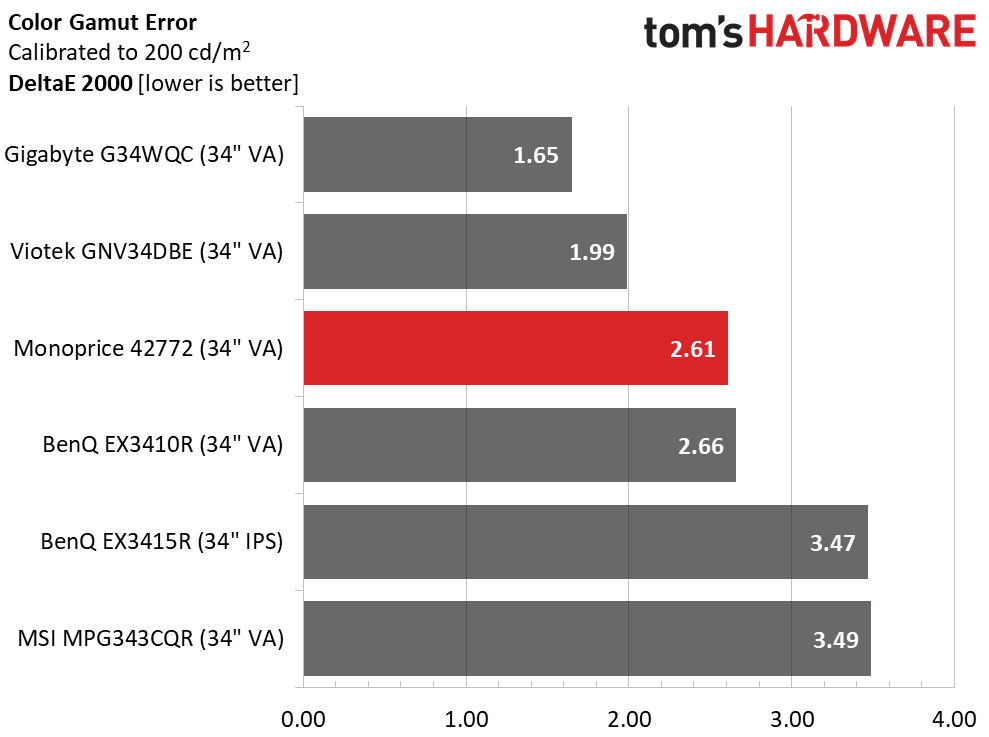
The 42772 posts a solid third-place finish in the color accuracy test. All the monitors here are measured against the DCI-P3 spec. In terms of accuracy, this is about as good as it gets.
The 42772 becomes a stand-out display in the volume calculation. Only a handful of monitors I’ve tested have more color than this. With a hair less than 98% coverage, this Monoprice is in an elite group. There is no sRGB mode, so that coverage is a whopping 145.2%. Some SDR games can look a bit overblown, but I suspect few users will complain about this. The 42772 is fine for color-critical work in the DCI-P3 realm. If you need to edit sRGB content, a profile will be necessary.
Current page: Grayscale, Gamma and Color
Prev Page Brightness and Contrast Next Page HDR Performance
Christian Eberle is a Contributing Editor for Tom's Hardware US. He's a veteran reviewer of A/V equipment, specializing in monitors. Christian began his obsession with tech when he built his first PC in 1991, a 286 running DOS 3.0 at a blazing 12MHz. In 2006, he undertook training from the Imaging Science Foundation in video calibration and testing and thus started a passion for precise imaging that persists to this day. He is also a professional musician with a degree from the New England Conservatory as a classical bassoonist which he used to good effect as a performer with the West Point Army Band from 1987 to 2013. He enjoys watching movies and listening to high-end audio in his custom-built home theater and can be seen riding trails near his home on a race-ready ICE VTX recumbent trike. Christian enjoys the endless summer in Florida where he lives with his wife and Chihuahua and plays with orchestras around the state.
-
RECONFX ReplyAdmin said:Monoprice’s latest Ultra-Wide gaming monitor is the Dark Matter 42772 with 3440x1440 resolution, 165 Hz, Adaptive-Sync, HDR and extended color. It sports a high-contrast VA panel with one of the largest color gamuts available.
Monoprice Dark Matter 42772 Review: Big Color, Contrast and Value : Read more
Awesome review, I'm trying to calibrate both the G34WQC and Dark Matter side by side.. but I'm confused as to what settings you would set in the Nvidia Control Panel in the bottom of the Resolution section: 8 bit full rgb... ybcbcr 4:4:4 limited 10 bit... 10 bit full rgb etc..? Theres so many variations I don't know which is correct for these monitors. Thanks!